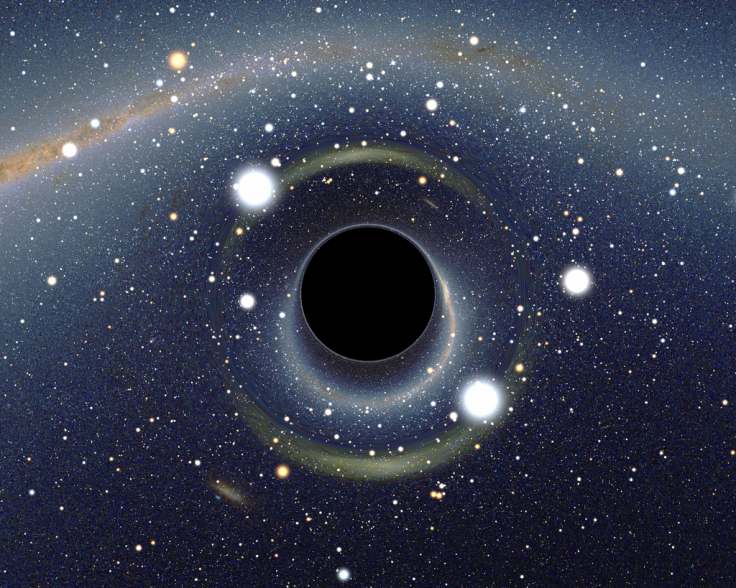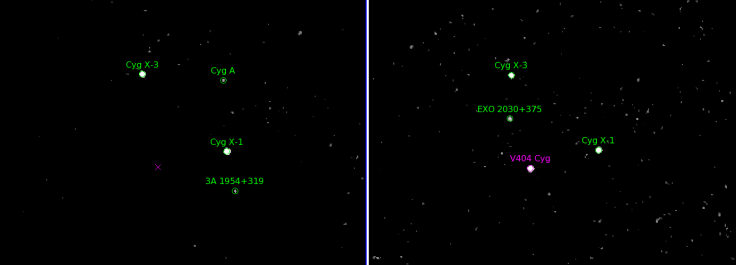Sleeping Black Hole Wakes Up After 26 Years And Is Devouring Everything

We can relate to black hole V404 Cygni's plight. We've all taken a nap that went too long and woken up hungry and slightly confused. In the case of V404 Cygni, the black hole woke up from a 26-year slumber and has been busy feasting on nearby material from its stellar companion.
The European Space Agency's Integral satellite has been busy observing V404 Cygni's outburst in the X-ray spectrum. The black hole is 12 times more massive than the sun and is located in the constellation Cygnus. It's part of a binary system with a star that has half the mass of our sun. Material from this star gets collected in a disk around the black hole. Astronomers believe that as more material accumulates, the disk overflows and triggers an intense feeding period. The material heats up and appears extremely bright in the X-ray wavelength. Other spacecraft -- including NASA's Swift satellite and the International Space Station's Monitor of All-sky X-ray Image (MAXI) camera -- have also observed the X-ray bursts.

"In these moments, it becomes the brightest object in the X-ray sky – up to 50 times brighter than the Crab Nebula, normally one of the brightest sources in the high-energy sky," Erik Kuulkers, Integral project scientist at ESA, said in a statement. Astronomers previously saw an outburst from V404 Cygni in 1989, which was vital in the early study of these elusive objects. It seems like the black hole has a 20-to-30 year feeding cycle as astronomers previously observed increased activity in 1938 and 1956. Radio telescopes also observe the black hole to learn more about jet particles.
NASA's Chandler X-ray Observatory previously observed a napping black hole that was dormant despite ample material around the object. Another black hole, P13, was discovered to be quite the fast eater in 2014.
© Copyright IBTimes 2024. All rights reserved.











